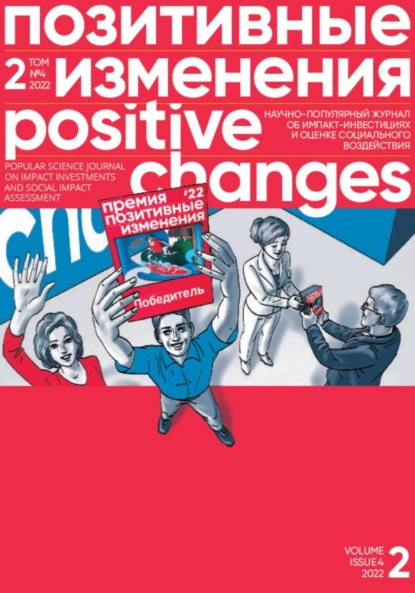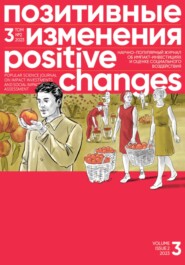По всем вопросам обращайтесь на: info@litportal.ru
(©) 2003-2024.
✖
Позитивные изменения. Том 2, №4 (2022). Positive changes. Volume 2, Issue 4 (2022)
Настройки чтения
Размер шрифта
Высота строк
Поля
GJDA = Green job design and analysis;
GRS = Green recruitment and selection practices; GTD = Green training and development practices; while µ = the error term.
RESULTS AND DISCUSSION
This section presents the results of the analysis conducted using SPSS software, the summary of which is contained in Table 1, 2 and 3.
Table 1. Reliability Statistics
Table 2. Model Summary
Table 3. Coefficients
The reliability test in Table 1 shows that the five variables have Cronbach's alpha coefficient above 0.70, which according to Hair et al. (2010) is considered the minimum acceptable level.
REGRESSION RESULTS
A regression analysis was conducted by regressing environmental sustainability on GJD, GRS and GTD via multiple regression model.
Table 2 shows the R square of 0.467, signifying that 46.7 per cent of variations in environmental sustainability are explained by the predictors vis-?-vis GJD, GRS, and GTD. The Table further shows F-statistic of 121.333 and its associated P-value of 0.00 which is statistically significant at 0.001. This is a confirmation that the joint estimated coefficient of GJD, GRS, and GTD are statistically significant on environmental sustainability. Also, Table 2 shows the Durbin-Watson Statistics of 1.914, which confirms nonautocorrelation of errors.
Similarly, the Variance Inflation Factor (VIF) in Table 3 are 1.028, 1.147 and 1.129 for GJD, GRS, and GTD with associated tolerance statistics of 0.979, 0.872 and 0.886 respectively. The VIF are well below 5.0 and the tolerance statistics are above 0.2, which means there is no collinearity problem in this model. According to Hair et al. (2011) VIF above 5 is an indication of collinearity concern. While Field (2009) is of the view that tolerance statistics below 0.2 indicate serious problems. The study's VIF and tolerance statistics are within the acceptable limits.
HYPOTHESIS ONE
H0
: Green job design and analysis have no significant effect on environmental sustainability.
Table 3 shows that green job design and analysis has no significant effect on environmental sustainability as validated by the P-value of 0.728 which is greater than 5 per cent level. The study, therefore, failed to reject the null hypothesis one (H0
) and concluded that GJD has no significant effect on environmental sustainability.
HYPOTHESIS TWO
H0
: Green recruitment and selection practice have no significant effect on environmental sustainability.
Table 3 reveals a p-value of 0.001 which is less than 5 per cent level. This means green recruitment and selection practice have significant effect on environmental sustainability. The study therefore rejects the null hypothesis two (H0
) and concluded that GRS practice has significant effect on environmental sustainability. This study confirms studies conducted by Jehan et al. (2020), Muhammad et al. (2019), Owine and Kwasira (2016), which indicates that GRS have significant effect on environmental sustainability.
HYPOTHESIS THREE
H0
: Green training and development practice have no significant effect on environmental sustainability.
Table 3 indicates that green training and development practice have significant effect on environmental sustainability as indicated by a p-value of 0.01 level (i.e. p < 0.01), which is statistically significant. The study, therefore, rejects the null hypothesis and concluded that GTD practice have significant effect on environmental sustainability. Finding of this study validates those of Bangwal et al. (2017), Gill et al. (2021), Mandago (2019), Mobarez (2018), Rawashdeh (2018), and Zhao et al. (2020) which reveal that GTD have significant effect on environment sustainability.
DISCUSSIONS OF FINDINGS
The study's aim was to evaluate the effect of GHRM practices on environmental sustainability via GJD, GRS and GTD. Findings of this study shows that GJD has no effect on environmental sustainability, while GRS and GTD have statistically significant effect on environmental sustainability of DMBs in Katsina State. It will therefore be safe to state that GJD of DMBs in Katsina State has no green elements that would contribute to the sustainability of the environment. Meanwhile, GRS and GTD have a significant positive effect on the environmental sustainability, since these practices incorporate environmentally friendly activities like online job application and recruitment, computerization of recruitment and selection processes, which discourage the use of paper and travelling for exams and interviews. More so, the banks hold online training for staff; train their employees on environmental safety and health, and on the use of energy efficient equipment and facilities in the banks. All these are efforts to discourage environmental hactivities that are harmful to the environment and create safe and healthy workplace. The findings on GRS, and GTD confirm the findings by Bangwal et al. (2017), Gill et al. (2021), Mandago (2019), Mobarez (2018), Rawashdeh (2018), and Zhao et al. (2020) which established that GRS and GTD have significant effect on environmental sustainability.
CONCLUSION AND RECOMMENDATIONS
The study evaluated the effect of green human resources management practices which is predicated by GJD, GRS, and GTD. Descriptive research design was employed, and structured questionnaires were administered to 672 respondents; however, only 420 questionnaires were validly completed and used for the analysis. Regression result revealed the p-value of 0.728, 0.001 and 0.001 for GJD, GRS, and GTD respectively. Based on these findings, the following conclusions are made:
1. GJD has insignificant effect on environmental sustainability of DMBs In Katsina State, because the p-value is well above 5 %.
2. GRS practice of MDBs in Katsina State shows a positive and statistically significant effect on environmental sustainability at a p-value of 0.001.
3. The p-value of 0.001 for GTD practice of MDBs in Katsina State indicates a positive and statistically significant effect on environmental sustainability.
In line with the study's findings and resulting conclusions, the study recommended that:
1. DMBs in Katsina State should collaborate with their headquarters to review their job design and analysis to include at least one element of green practice and green working structure as a duty and designed environment for their employees. By so doing they will be creating green consciousness in their employees.
2. The banks should make their GRS practices more sustainable and include knowledge of environmental sustainability in their job criteria so as to attract those that are green conscious and brand themselves as environmentally friendly organization.
3. DMBs should just like other sustainability elements (economy and social) make well defined policies on environment sustainability and incorporate in all their human resource practices.
4. DMBs should treat the environmental sustainability issues all seriousness it desire, since by so doing they will be maximizing this non-financial value to a broader range of stakeholders.
REFERENCES
1. Abaje, I. B., Onu, V., Abashiya, M., Oyatayo, K. T., Ibrahim, A. A., Ati, O. F. & Sawa, B. A. (2017). Climate Change Vulnerability Assessment in Northern Part of Katsina State, Nigeria: A quantitative approach. Dutse Journal of Pure and Applied Science (DUJOPAS), 3(1)1–14.
2. About Stakeholder Theory. (2018). Retrieved from: http://www.stakeholdertheory.org/ about. (accessed 22.12.2020).
3. Adesola, M. A., Yahaya, Y. & Abodunde, S. M. (2021). An Exploratory Study of Green Human Resource Management and Environmental Performance of Nigerian Manufacturing Companies. Indiana Journal of Humanities and Social Sciences, 2(7), 50–57. Retrieved from: https:// indianapublications.com/Journals/IJHSS. (accessed 10.12.2022).
4. Ali, H. H. & Wael, L. S. (2018). Impact of Green Human Resource Management on Employee Behaviour. Journal of Applied Business Research, 6(1), 18–34.
5. Bangwal, D., Tiwari, P. & Chamola, P. (2017). Green HRM, Work-Life and Environment Performance. International Journal of Environment Workplace and Employment 4(3), 244–268. DOI: 10.1504/ IJEWE.2017.10008697.
6. Bangwal, D., Tiwari, P. (2015). Green HRM – A Way of Greening the Environment. IOSR Journal of Business Management (IORS-JBM) 17(12), 45–53. DOI: 10.9790/487X-171214553.
7. Bhasin, H. (2020, October 6). Marketing91. Retrieved from: https://www.marketing91. com. (accessed 22.12.2020).
8. Bombiak, E. (2019). Green Human Resource Management – The Latest Trend Or Strategic Necessity? Journal of Entrepreneurship and Sustainability Issues, 6(4), 1647–1662. http://doi.org/10.9770/ jesi.2019.
9. Briggs, H. (2017, May 31). Science & Education. Retrieved from: http://www.bbc. com. (accessed 24.11.2020).
10. Cohen, E., Taylor, S., & Muller-Camen,
M. (2012). HRM's Role in corporate social and environmental sustainability. USA: SHRMFoundation.org. Retrieved from: https://www.shrmf.org. (accessed 10.12.2022).














